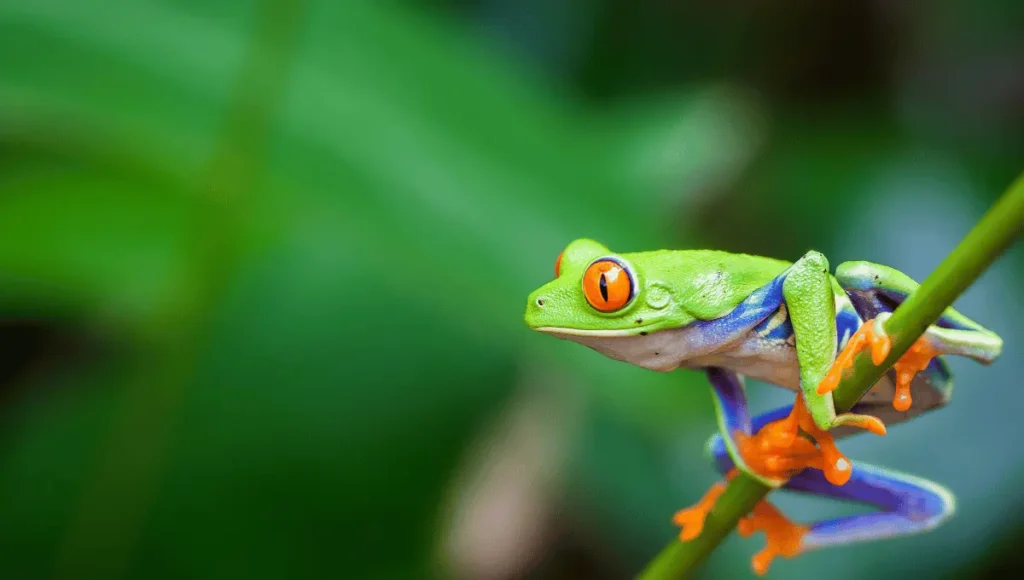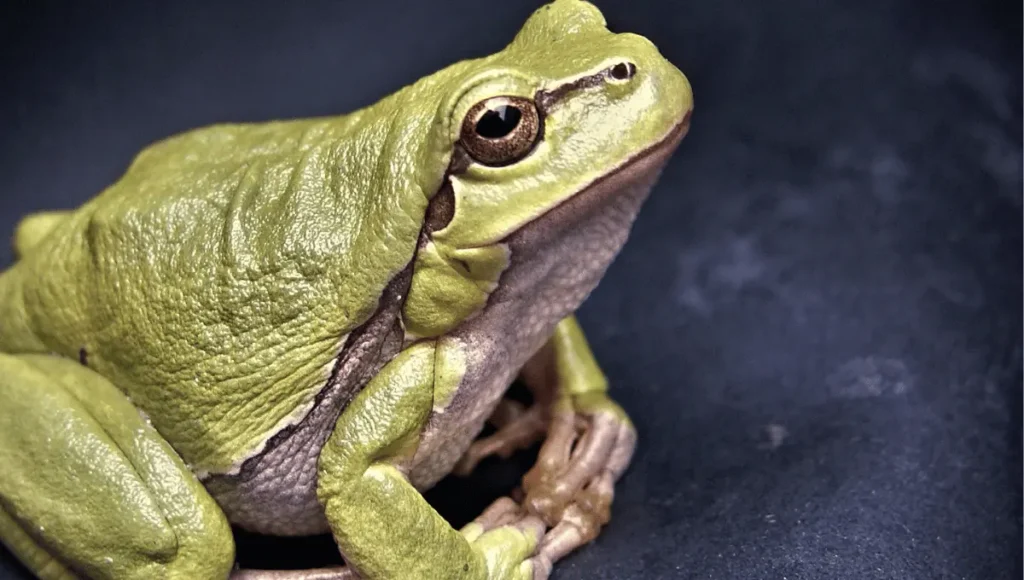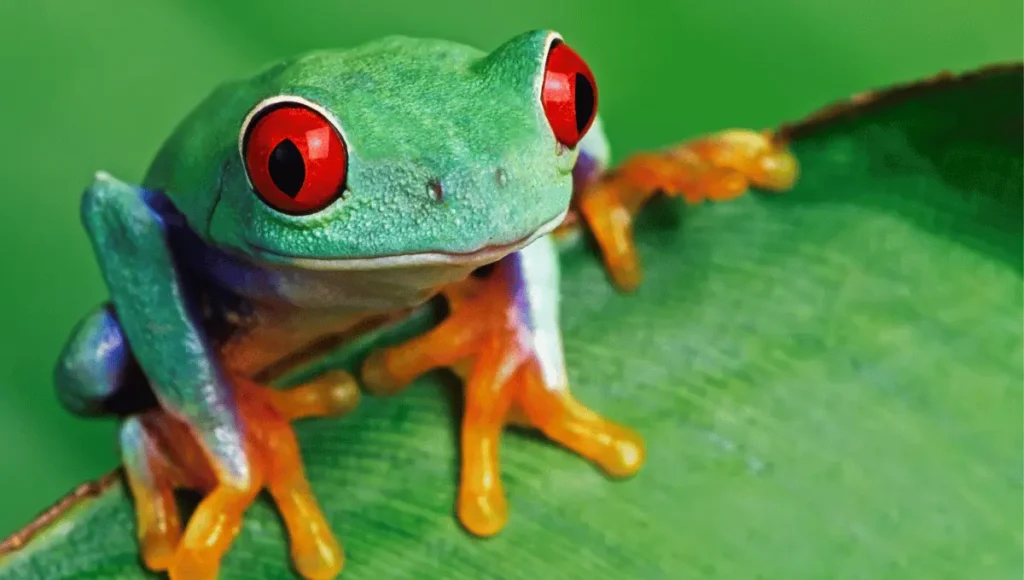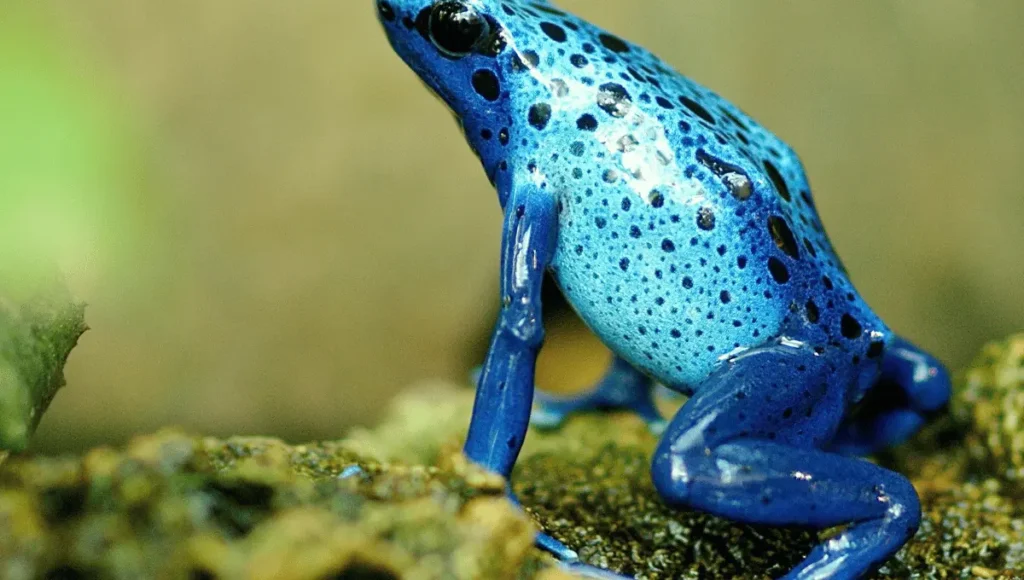Introduction
When most people think about a frog’s diet, they often picture them munching on insects like flies and mosquitoes. However, frogs are far more versatile eaters than one might assume. In addition to insects, frogs consume a wide range of foods that might surprise you.
Understanding “What do frogs eat besides insects?” can provide deeper insights into their survival strategies and natural habitats.
This article explores the variety of foods that make up a frog’s diet, shedding light on their unique eating habits and the factors that influence their choices.
Key Takeaways
- Frogs eat a variety of foods besides insects, including fruits, algae, and small animals.
- Diet is influenced by habitat, species, and food availability.
- Understanding frog diets highlights their adaptability and ecological roles.
- Maintaining diverse habitats is crucial for supporting frog populations.
What Do Frogs Eat Besides Insects in the Garden

Frogs are a common sight in many gardens, and while they are well-known for their appetite for insects, they also consume a variety of other foods found in a typical garden environment.
Understanding what frogs eat besides insects in the garden can help gardeners appreciate the role these amphibians play in maintaining a healthy ecosystem.
Slugs and Snails
One of the primary non-insect foods that frogs consume in gardens are slugs and snails. These pests are often a gardener’s nightmare, as they can cause significant damage to plants. Frogs naturally help control these populations by feeding on them.
Slugs and snails provide a good source of protein and calcium for frogs, contributing to their growth and overall health. By reducing the number of these pests, frogs help protect garden plants, making them a valuable ally for gardeners.
Worms and Grubs
Frogs in the garden also eat worms and grubs. Earthworms, in particular, are a common food source for frogs, especially during the evening or after rain when worms come to the surface. Grubs, which are the larvae of various insects, are another target for frogs.
These creatures are often found in the soil and can be detrimental to plant roots if left unchecked. By eating worms and grubs, frogs help maintain soil health and prevent potential damage to garden plants.
Plant Matter and Vegetation
Although less common, some frogs might also nibble on plant matter and vegetation in the garden. This behavior is typically seen in species that are more omnivorous or when other food sources are scarce.
Frogs might eat soft leaves, fallen fruit, or even algae growing in garden ponds. While plant matter is not a significant part of their diet, it can supplement their nutritional intake, especially in environments where other food is limited.
Small Amphibians and Reptiles
In some cases, garden frogs may prey on smaller amphibians and reptiles, such as young lizards or even smaller frogs.
This is more common in larger frog species that have the ability to consume these types of prey. While this behavior might be surprising to some gardeners, it is a natural part of the food chain and helps regulate populations of these creatures in the garden ecosystem.
Plant-Based Foods Frogs Eat

Fruits and Vegetables
While frogs are predominantly carnivorous, some species have been observed eating plant matter, particularly fruits and vegetables. These dietary habits are more common in captivity, where frogs might be offered a variety of foods.
For instance, certain tree frogs are known to nibble on soft fruits such as bananas, berries, and melons. These fruits are rich in vitamins and can provide essential nutrients that are not available from insects alone.
In their natural habitats, frogs may occasionally consume plant matter, especially in areas where fruits are abundant. Although vegetables are less common in their diets, some frogs have been seen munching on leafy greens like spinach or small pieces of carrots.
These plant-based foods can supplement their diet, especially in environments where insect populations are low.
Algae and Aquatic Plants

Algae and aquatic plants are another surprising part of a frog’s diet, particularly for species that spend most of their time in or near water. Tadpoles, the larval stage of frogs, primarily feed on algae and microscopic plant matter in the water.
As they grow, their diet becomes more varied, but some adult frogs continue to consume aquatic plants. Algae provide a good source of energy, while other aquatic plants can offer additional nutrients that are vital for the frog’s health.
Frogs may also eat small bits of submerged vegetation, particularly when other food sources are scarce. This diet not only sustains them but also plays a crucial role in maintaining the balance of their aquatic ecosystems.
Common Foods Frogs Eat Besides Insects
| Category | Examples | Nutritional Benefits |
| Plant-Based Foods | Fruits (bananas, berries), Algae | Vitamins, Energy |
| Aquatic Animals | Small Fish, Tadpoles | Protein, Essential Nutrients |
| Terrestrial Animals | Worms, Snails, Small Amphibians | Protein, Calcium, Nutritional Variety |
| Unusual Foods | Eggs, Carrion, Larvae | Additional Nutrients, Survival Strategy |
Non-Insect Animal Foods Frogs Consume
Small Fish and Tadpoles
Frogs are opportunistic feeders, and their diet often includes small fish and even other frogs’ tadpoles. In the wild, frogs will take advantage of any prey they can catch, and small fish are no exception.
Species like the African Bullfrog are known for their voracious appetites, consuming small fish whenever the opportunity arises. Fish provide a rich source of protein and other nutrients that help frogs grow and maintain their energy levels.
Interestingly, frogs will also eat tadpoles, including those of their own species, particularly in overcrowded environments. This cannibalistic behavior is not uncommon and serves as a survival strategy, reducing competition for resources among the remaining tadpoles.
Worms and Snails
Worms and snails are another essential part of a frog’s diet, particularly for larger species. Earthworms, for example, are rich in protein and relatively easy for frogs to catch.
They provide a substantial meal that can sustain a frog for a significant amount of time. Snails, on the other hand, offer both protein and calcium, which is crucial for a frog’s bone health.
Some frog species have developed specialized feeding behaviors to handle the hard shells of snails, such as crushing or repeatedly striking the snail against a hard surface to break it open. This behavior highlights the adaptability and intelligence of frogs when it comes to securing a nutritious meal.
Small Amphibians and Reptiles
In addition to fish and other frogs, some frog species will also prey on small amphibians and reptiles. For example, large frogs such as the Green Tree Frog have been observed eating small lizards and even young snakes.
These predators have a strong bite and a quick, sticky tongue, making it possible for them to capture and consume these more challenging prey items.
This aspect of their diet is particularly common in frogs that live in environments where these smaller animals are abundant. The consumption of small amphibians and reptiles provides frogs with a substantial source of nutrients, further demonstrating their opportunistic feeding habits.
Unusual Foods Frogs Might Eat

Eggs and Larvae
Frogs are not picky eaters, and this extends to eggs and larvae. Some species are known to consume the eggs of other amphibians, reptiles, and even fish.
This behavior is particularly common in environments where other food sources are limited. Frog eggs themselves are sometimes eaten by adult frogs, especially during breeding seasons when eggs are plentiful.
Larvae, including insect larvae, are another significant part of a frog’s diet. These larvae are typically found in or near water and provide a convenient and nutritious meal for frogs. The consumption of eggs and larvae ensures that frogs have access to a varied diet, even in challenging environments.
Carrion and Scavenging Behaviors
While it might seem surprising, some frog species have been observed engaging in scavenging behaviors, consuming carrion or the remains of dead animals.
This is particularly true for larger frog species that can handle larger food items. While carrion is not a primary food source for most frogs, it can be an essential resource in times of scarcity.
Scavenging behavior helps frogs survive in harsh conditions where live prey is not readily available. This adaptability in their diet highlights the resilience of frogs and their ability to thrive in a variety of environments.
Factors Influencing Frog Diets
Habitat and Availability
The diet of a frog is heavily influenced by its habitat and the availability of food sources. Frogs that live in aquatic environments are more likely to consume algae, aquatic plants, small fish, and other water-dwelling creatures.
In contrast, frogs in terrestrial habitats may have a diet that includes more insects, fruits, and small animals.
Seasonal changes also play a significant role in determining what frogs eat. During dry seasons or colder months, when insects are less abundant, frogs may turn to alternative food sources like plant matter or carrion.
The adaptability of frogs to their surroundings is crucial for their survival, allowing them to thrive in diverse environments.
Frog Species and Size
Different frog species have varying dietary preferences, often influenced by their size and natural habitat. Larger frogs, such as the Goliath Frog, are capable of eating small mammals, birds, and reptiles, while smaller species might stick to insects and small invertebrates. The size of the frog also determines the size of prey it can capture and consume.
The species of the frog also dictates its feeding habits. For example, aquatic frogs are more likely to eat fish and aquatic plants, while tree-dwelling frogs might consume more insects and fruits. Understanding the relationship between frog species and their diets can provide valuable insights into their behavior and ecological roles.
Conclusion

Frogs are fascinating creatures with diverse diets that extend far beyond just insects. From fruits and algae to small fish and amphibians, frogs have adapted to eat a wide range of foods depending on their environment and species.
Understanding what frogs eat besides insects not only provides insights into their survival strategies but also underscores the importance of maintaining diverse habitats to support these versatile eaters.
By studying their diets, we can gain a deeper appreciation for these adaptable and resilient animals.
FAQs
1. Can frogs eat fruits and vegetables in my garden?
Yes, while it’s not common, some frogs may eat soft fruits and vegetables, particularly if other food sources are scarce. They might nibble on fallen fruits or leafy greens, supplementing their diet.
2. Do frogs help control garden pests besides insects?
Absolutely! Frogs eat a variety of garden pests such as slugs, snails, worms, and grubs, helping to protect your plants and maintain a healthy garden ecosystem.
3. Is it normal for frogs to eat small animals in the garden?
Yes, larger frogs may eat small amphibians, reptiles, or even other smaller frogs if they are available. This is a natural part of their diet and helps maintain balance in the garden.
4. Do frogs eat algae or aquatic plants in garden ponds?
Yes, frogs, particularly those that spend a lot of time in water, may consume algae and other aquatic plants found in garden ponds. This can help keep the pond environment healthy.
5. How can I attract frogs to my garden to help with pest control?
To attract frogs, create a moist environment with plenty of hiding spots and a water source like a small pond. Frogs are drawn to gardens that provide food, shelter, and water.
I am Ismail Jam, and I have a great interest in frogs and toads. These amazing creatures are full of variety and play important roles in nature. I enjoy learning about them and their habitats as I travel and explore different places.
Pingback: What Can Frogs Eat? A Guide to Safe Frog Diet Choices
Pingback: Do Frogs Eat Fireflies? Facts You Should Know
Pingback: Do Frogs Eat Aquatic Plants? Surprising Diet Facts
Pingback: What do Toads eat | Things you Need to Know